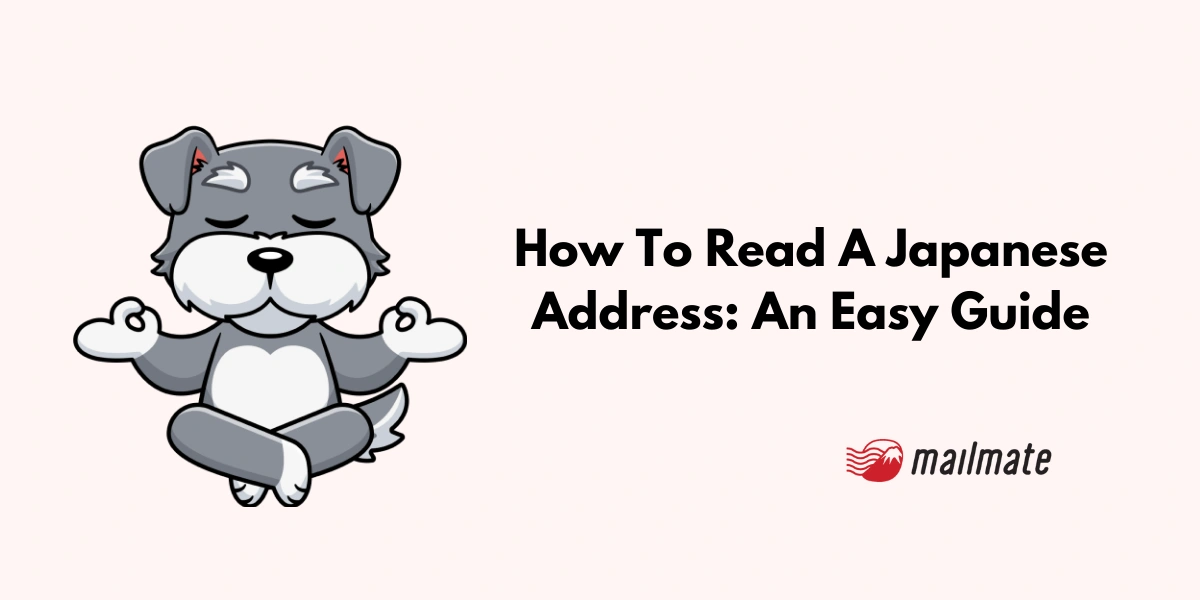How To Read A Japanese Address: An Easy Guide

When looking at a typical Japanese address, it can be confusing at first. And one of the biggest differences is that Japanese addresses don’t use street names.
So to help you fully understand, here is an easy guide on how to read a Japanese address.
Breaking down a Japanese Address

Right: Japanese address format; Left: Japanese international address format
Let’s use this example address from Japan Post for this breakdown.
1) Postal code

〒 is the Japanese symbol for its postal code. So, the postal code above is 170-3293.
The Japanese postal code is at the end in the international address format.
2) Prefecture

There are 47 prefectures in Japan, and the majority ends with -県 (-ken). For example, the Fukuoka Prefecture is written as 福岡県.
However, there are special areas in Japan that don’t necessarily use the prefecture in its address:
東京都 (Tokyo-to): Since Tokyo is the capital, it’s given a special 都 (-to) at the end. The example address uses 東京都.
大坂府 (Osaka-fu): Osaka has a special 府 (-fu), which means “urban prefecture.”
京都府 (Kyoto-fu): Kyoto is given a special 府 (-fu) to mean “urban prefecture.”
北海道 (Hokkaido): Hokkaido is given 道 (-dou) to mean “circuit.”
3) Municipality

The next section when reading a Japanese address is the municipality, which has three possibilities:
[Name]市: 市(-shi) means “city” and is given to areas with enough population. For example, Fukuoka, Hiroshima, Chiba, Yokohama, and Sapporo are given 市 at the end.
[Name]区: 区 (-ku) means “ward” and is for subsections of cities. Tokyo’s 23 wards have 区.
[Name]郡: 郡(-gun) means “county” and is for areas with populations that can not be considered as 市(-shi) or city. As such, many rural areas or inaka Japan will use 郡(-gun).
4) Town
After the municipality, some Japanese addresses are broken 2 smaller areas:
[Name]町: 町 (-machi or -cho) means “town.”
[Name]村: 村 (-son) means “village.”
Not all Japanese addresses have this subdivision, though.
5) District, block, building

Next can be called the section areas of a Japanese address. It can be divided into:
丁目 (-chōme): city district. Usually, it is based on how close it is to the city center.
番地 (-banchi): city block. The block number is within a chōme.
号 (-gou): building number.
In the example address above, it’s written as 銀座5−2−1but it can be written as 銀座5丁目2番地1号 to include the extra information.

via Google Maps
6) Building name, floor, or room number
This last part pertains to larger buildings, which include offices, stores, or apartments.
Specific floors would be indicated by 階 (-kai) or F.
Apartments and similar buildings would include the building’s name and room/apartment number (## 室号 (-shitsu go).
Alternative Japanese addresses
Kyoto's address system
Due to its historic grid layout, the Kyoto address system is street-based rather than the national standard.
It doesn't use street names but instead uses intersections of streets and the relative direction from that intersection. A building's location will be relative to the intersection, so you'll see directions like:
North: 上ル (-agaru)
South: 下ル (-sagaru)
East: 東入ル (-higashi-iru)
West: 西入ル (-nishi-iru)
Let's take a look at Kyoto Tower's address 〒600-8216京都市下京区烏丸通七条下ル 東塩小路町 721-1. The bolded text to find Kyoto Tower can be translated to "south of the intersection of Karasuma and Shichijō streets."
Sapporo address system
Because of Sapporo's grid structure, the address-based system is centered around two main streets, Kita-Ichijo Avenue and Soseigawa Street. So, the city is divided into blocks or quadrants:
条 (-jō) to indicate the north-south distance
丁目 (-chōme) to indicate east-west distance from the city center.
Let's take a look at Sapporo JR Tower's address: 札幌市中央区北5条西2丁目5番地 or Sapporo-shi, Chūō-ku, Kita-5-jō, Nishi 2-chōme, 5-banchi. The Sapporo JR Tower Building is located 5 jō (north) and 2 chōme (west) of the city center.
Sapporo's address system generally covers about 7 kilometers north-south and around 3 kilometers east-west from the city center. The system will use landmarks as reference points any further from the center.
The written order of Japanese addresses
Let’s put everything together by breaking down one more address in Japanese and English.
For this part, we’ll be using a Starbucks address in Hakata, Fukuoka: 〒812-0011 福岡県福岡市博多区博多駅前2丁目1−1福岡朝日ビル 1F.
Japanese address
The Japanese address system goes from largest to smallest. In this format, it'll be written in Japanese characters.
Postal code: 〒812-0011
Prefecture: 福岡県
Municipality: 福岡市
Town/ward: 博多区
District: 博多駅前
Block: 2丁目1−1
Building or house number: 福岡朝日ビル 1F
Japanese address in English
The address is reversed in its Romanized form to comply with international address standards. Here is the same address but in English:
Fukuoka Asahi Building 1F, 2-1-1 Hakata Ekimae, Hakata-ku, Fukuoka-shi, Fukuoka-ken, JAPAN, 812-0011
So, the international address standard goes from smallest to largest.
Additionally, it's perfectly fine to write the address in any format, as the Japanese postal services will accommodate both styles.
In closing
Now you know how to read a Japanese address. Whether you are writing in Japanese or English, understanding the structure is key when writing any Japanese address down.
Keep in mind that Kyoto and Sapporo have a different format than the official national address system, but the core principles remain the same.
Rest assured that Japanese postal services will efficiently handle your mail.
Spending too long figuring out your Japanese mail?
Virtual mail + translation services start at 3800 per month. 30-day money-back guarantee.

